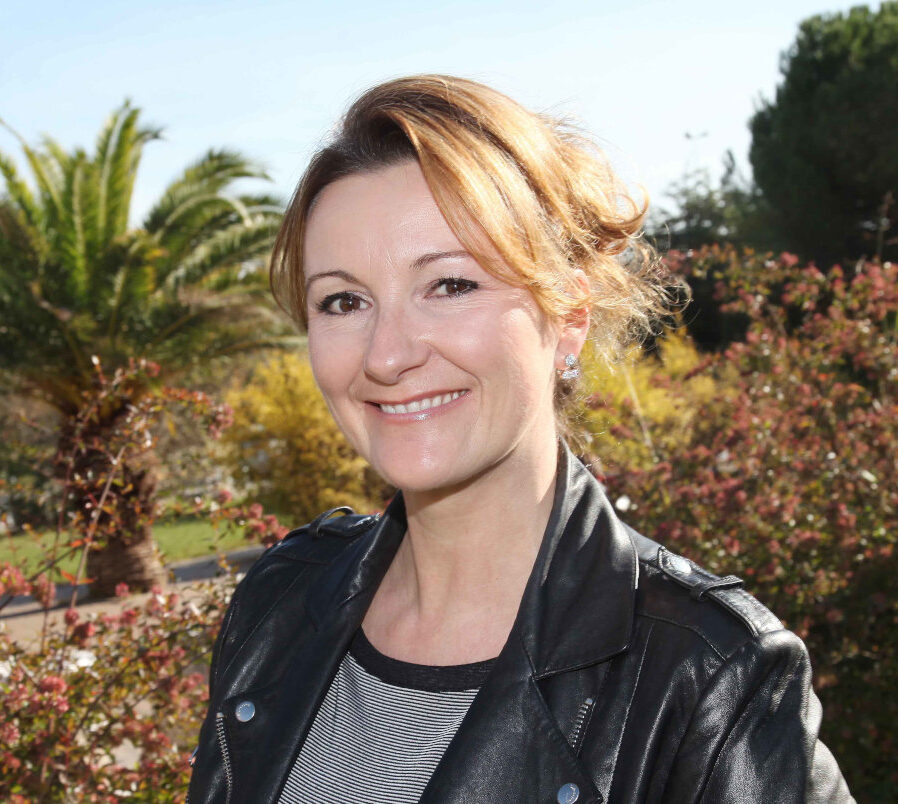Catherine Alix-Panabières: A Very Circulating Researcher (CTC)
Catherine Alix-Panabières is an international specialist in circulating tumor cells (CTC) and liquid biopsy. A professor of oncology at the University of Montpellier and director of the Laboratoire cellules circulantes rares humaines et biopsie liquide (LCCRH), is opening up new avenues of research into the biomarkers of cancers present in the blood, with therapeutic prospects in the offing.

Montpellier University Hospital owes its international expertise in liquid biopsy to Catherine Alix-Panabières. Catherine Alix-Panabières, who pioneered the use of blood sampling to diagnose cancer 25 years ago, can now boast that there is not a cancer congress without a session on the subject. This international recognition is reflected in the numerous awards she has won, including two prizes from the French National Academy of Medicine in 2012 and 2023, theInternational liquid biopsy society award and theAlexandr Savchuk award. She makes no secret of her pleasure at playing in the big league. " I find it exceptional to have been able to exchange views with a scientific figure of the stature of the Nobel Prize in Medicine 2018Professor Tasuku Honjo ", she enthuses, referring to her meeting with the famous immunologist at Kyoto University in Japan this year.
Catherine Alix-Panabières began research in France on the detection of circulating tumor cells (CTCs) in solid cancers as early as her post-doctorate in 1999, straddling the University Hospital and the University of Montpellier. Certain more aggressive cells break away from cancerous tumors and travel in the blood to other organs (liver, bone, lung, brain...) where they create micrometastases and then metastases. The study of these cells, which disseminate cancer, is rapidly proving to be a promising therapeutic tool for establishing the prognosis of cancerous disease.
First patent
In 2002, the scientist filed her first patent and made a name for herself on the international scene. " Professor Klaus Pantel from the University of Hamburg spotted me at an international conference ", recounts the researcher, who has never interrupted her collaboration since and is now a visiting professor at the German university. It was in a joint publication(Circulating tumour cells in cancer patients: challenges and perspectives, in 50 Trends in molecular medicine, 2010) that the two researchers coined the term liquid biopsy in 2010.
But local recognition was slow in coming. " My work was initially greeted with reasonable skepticism ", she euphemisizes. But she firmly believed in her work, and found the means to finance her research and her position for eleven years, on a contract between the University Hospital and the University of Montpellier. " I raised a total of over 13 million euros to finance the equipment and research work in my laboratory; the LCCRH is the only one of its kind in Europe ". Unique for the diversity of the cancers studied - some fifteen cancers, including breast, prostate, pancreatic, melanoma and glioblastoma - but also for the numerous circulating biomarkers researched, which require as many ad hoc cutting-edge technologies.
From discovery to clinical applications
" Liquid biopsy is evolving. It's no longer just a question of identifying CTCs or circulating tumor DNA, but also all the other biomarkers induced by the tumor , such as immune system cells ", emphasizes the researcher, who lists the promises of a non-invasive test capable of deciphering the blood signature of biomarkers to diagnose cancer and its severity, but also to identify therapeutic targets and provide the most appropriate treatment, assess treatment efficacy and identify resistance mechanisms, and assess residual cancerous disease upstream of standard imaging. "This is what we call personalized medicine.
In 2020, a trial carried out at Montpellier University Hospital demonstrated, for the first time worldwide, the clinical usefulness of a liquid biopsy in the choice of treatment for metastatic breast cancer(Molecular and functional characterization of circulating tumor cells: from discovery to clinical application, in Clinical chemistry, 2020). In fact, this test is extremely sensitive for detecting CTCs: these cells remain in the bloodstream for only a few hours, so their identification accurately reflects tumor progression in real time. These indicators of cancer severity can be used to decide whether or not chemotherapy is necessary.
Liquid biopsy and AI
Among the fifteen or so projects she is currently leading with her team and partners, a new flagship project concerns the search for a blood signature to detect pancreatic cancer at a very early stage(Early detection of pancreatic cancer by liquid biopsy "Panlipsy": a French nation-wide study project, in Springer nature link, 2024). " This is a major public health issue, because the incidence of this cancer is constantly rising, with a very poor survival prognosis ", she insists. The 5-year survival rate for patients is just 11%.
Here, the research protocol uses liquid biopsy and artificial intelligence: " In the first, so-called discovery phase, we use blood samples from several hundred sick patients so that the AI can train itself to identify the biomarker(s) characteristic of this cancer and distinguish them from those of healthy subjects. The aim is to obtain a robust decision-making algorithm. In a second or validation phase, the processing of liquid biopsy data "from an independent cohort of cancer patients and healthy subjects, will enable an early diagnosis of pancreatic cancer to be made, thanks to the previously trained algorithm", explains the researcher.
Tumor spread
His team is also pursuing research into the biology of metastatic processes and the development of new technologies capable of detecting functional CTCs, the initiators of metastatic disease(Mechanobiology and survival strategies of circulating tumo cells: a pocess towards the invasive and metastatic phenotype, in Frontiers in cell and developmental biology, 2023). This is a major challenge, given that over 90% of patients die from metastases rather than the original tumour. " Thanks to the in vitro culture of CTCs, we have succeeded in obtaining CTC lines with stem cell properties. This is an invaluable advance, as we now have a unique material with which to study tumor dissemination and understand how CTCs are responsible for relapse. I hope that our work will lead to one or more therapeutic avenues aimed at limiting tumor dissemination ", explains the professor.
We end our interview to let Catherine Alix-Panabières wrap up a new communication before flying to Sydney the following day. She is due to give a keynote lecture at the 10th anniversary of the Thomas Ashworth CTC conference and liquid biopsy symposium. But her list of activities goes on and on. In addition to the classic teaching and supervision duties of a university professor, she takes part in several symposia every month, and organizes large-scale events such as this fall's co-organization of an international conference on liquid biopsy in San Diego via the prestigious American association of cancer research (AACR). Or more recently, his participation in the design of a major exhibition on cancer at the Cité des Sciences in Paris. " It's a lot of different things to deal with at the same time, but it's also a great deal of intellectual freedom ," recounts the woman who, thanks to her international recognition, travels to the four corners of the globe.
